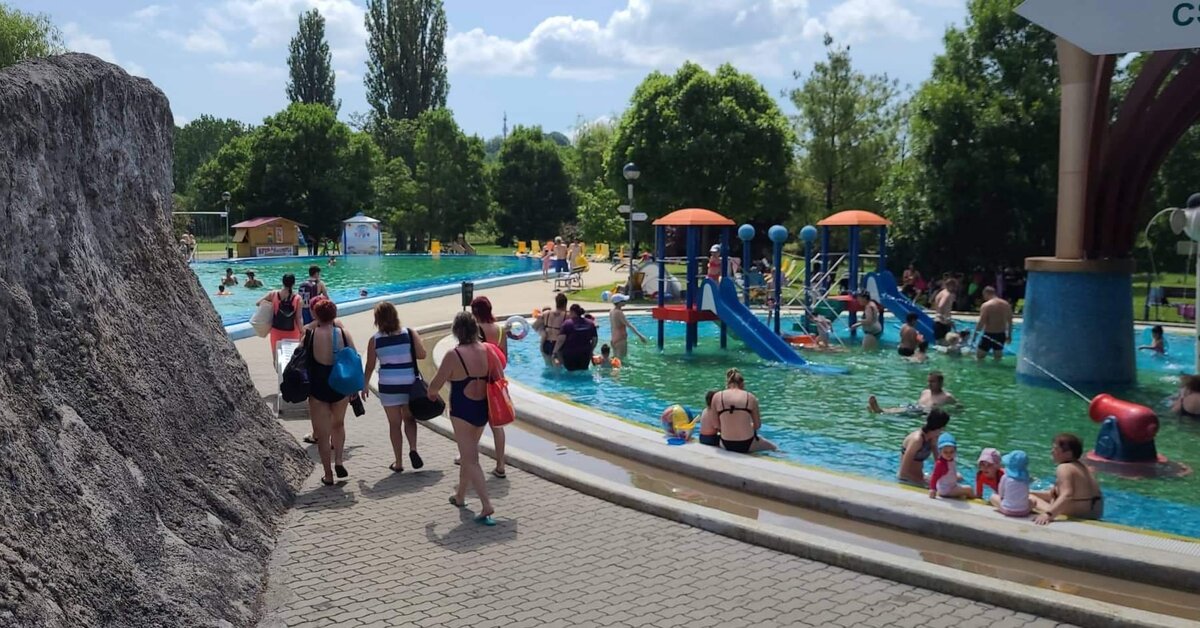Numerous outdoor baths in Hungary reopened on May Day: Brace yourself for the brutal ticket prices

The long weekend has brought more than just sunshine: the long-anticipated reopening of outdoor baths in Hungary is underway. While splashing into spring may sound refreshing, many visitors are in for a shock at the ticket counter, where steep prices are quickly becoming the new norm.
The beginning of beach season
May Day has traditionally marked the beginning of the beach season in Hungary, with many fondly remembering the times when almost every outdoor spa and thermal bath opened on 1 May. However, this tradition has seen a shift in recent years. As Termálfürdő reports, the opening of baths in Hungary now depends largely on weather conditions and expected visitor numbers. This year, with Pentecost falling later in June, several spas opted to welcome guests earlier than usual, including popular spots like the Palatinus Beach in Budapest and the Hungarospa in Hajdúszoboszló, both of which partially opened their facilities over the long weekend.

Gradual launch of services
Despite the early opening, many baths in Hungary will gradually launch their different seasonal services. Some pools at major complexes like Bükfürdő, Zalakaros, and Kehidakustány will remain closed until mid or late May, with full operation expected only by the start of the summer holidays in late June. In Budapest, while parts of the Palatinus are already open, visitors have to wait until mid-June for attractions such as the wave pool and water slides. Similarly, the Premium Zone at Hajdúszoboszló’s Hungarospa is only set to open on 18 June. This “gradual rollout strategy” is becoming more common across Hungary’s spa industry.
Baths in Hungary raise prices
However, the real shock for many visitors comes at the ticket booths. As Pénzcentrum highlights, despite efforts by many spas to keep prices stable for the start of the 2025 season, the spectre of ‘beach inflation’ looms large. A family of four visiting Egerszalók could pay as much as HUF 40,000 (EUR 98,89) for a day’s entry, four times as much as in Abony, where similar services cost around HUF 10,000 (EUR 24,72). While the average ticket price increase has stayed below the national inflation rate, the big differences in pricing show the financial pressure many in the industry are facing, driven by rising energy, water, and maintenance costs. Here is a comparison of ticket prices:
| Location | Adult ticket price |
| Hajdúszoboszló | HUF 5,000 (EUR 12,36) |
| Zalakaros | HUF 6,300 (EUR 15,58) |
| Cserkeszőlő | HUF 4,400 (EUR 10,88) |
| Abony | HUF 2,600 (EUR 6,43) |
| Mórahalom | HUF 5,500 (EUR 13,60) |
| Eger | HUF 4,200 (EUR 10,39) |
| Igal | HUF 4,200 (EUR 10,39) |
| Egerszalók | HUF 9,700 (EUR 23,99) |
| Gyula | HUF 4,700 (EUR 11,62) |
| Hévíz | HUF 7,500 (EUR 18,55) |
Note: Most baths in Hungary offer discounted prices for children, students and pensioners.
Lasting effects of the pandemic
Hungary’s famed thermal and spa culture remains a cornerstone of its domestic tourism, yet spas grapple with the pandemic’s lasting effects, tightening regulations, and rising operational expenses. As Zoltán Balogh, Secretary General of the Hungarian Bathing Association, told Pénzcentrum, many facilities have shortened their operating seasons or faced temporary closures due to financial difficulties. Even with 2024 visitor numbers expected to rebound to 90% of pre-pandemic levels, the future of baths in Hungary remains precarious.
Click HERE to read more about baths in Hungary.
Read also:







